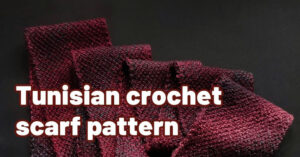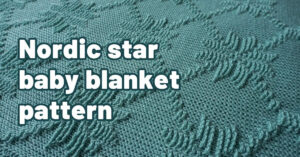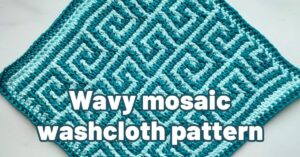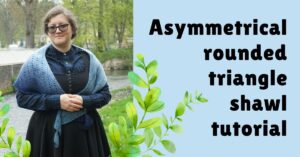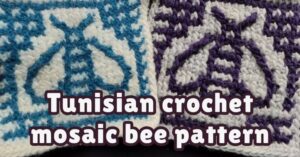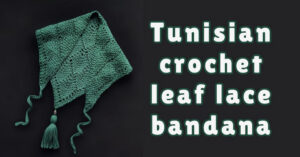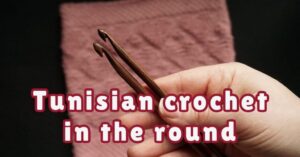Want to try out Tunisian crochet and don’t know where to start?
The Tunisian simple stitch (abbreviated as Tss) is the most basic and most widely used stitch in Tunisian crochet, so maybe start with it.
All the other Tunisian crochet stitches developed over decades by crafters have something in common with the Tunisian simple stitch, so once you master it, you’ll be able to easily learn all the other stitches as well.
In the following sections, we’ll cover the basics (how to make the Tunisian simple stitch, in photos and video), we’ll discuss how to manage curling, similar stitches, and I’ll answer some common questions I see often from beginners. I will also recommend some patterns to get you started.
Now pick up a hook and some suitable yarn (check out this article about Tunisian crochet basics to decide what hook/yarn combination to start with) and make a foundation row (I have a full tutorial here on how to make different types of foundation rows) and let’s get started making a Tunisian simple stitch fabric.
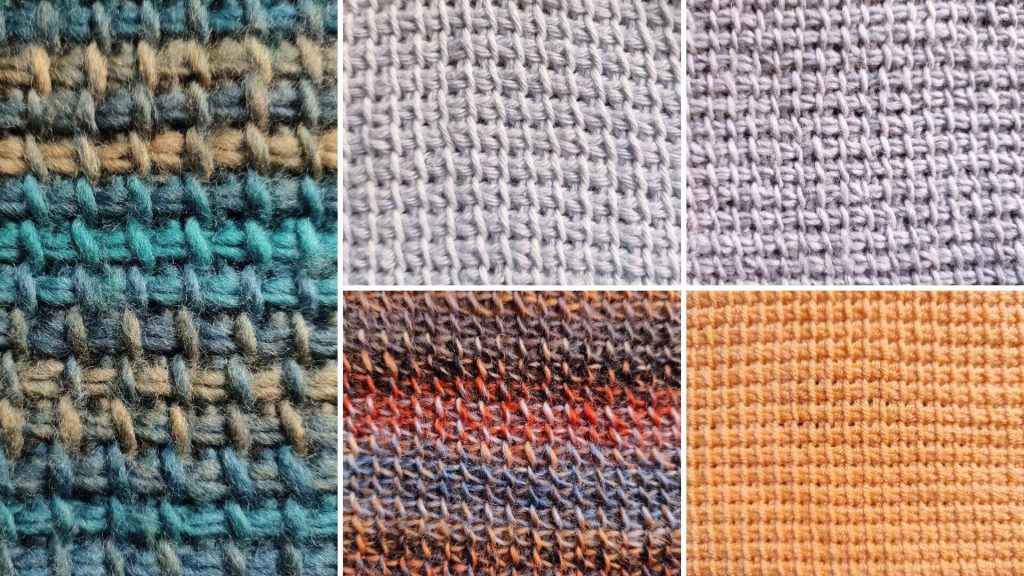
Tunisian simple stitch definition
The Tunisian simple stitch is the simplest and easiest to make stitch in the Tunisian crochet world.
It creates a grid-like fabric appearance, with vertical lines that overlap horizontal lines (the return pass chains). The fabric is smooth, uniform, soft to the touch.
The back of the fabric shows rows of horizontal loops, some larger and more forward than the others.
With proper tension and the right hook size, you can create perfectly square Tunisian simple stitches, which then allow you to create cross stitch embroidery on top of the fabric.
You can also use the square proportion of the stitches to make colorwork designs, where each stitch corresponds to a pixel in a graph. These projects are called graphghans and you can learn more about them here.
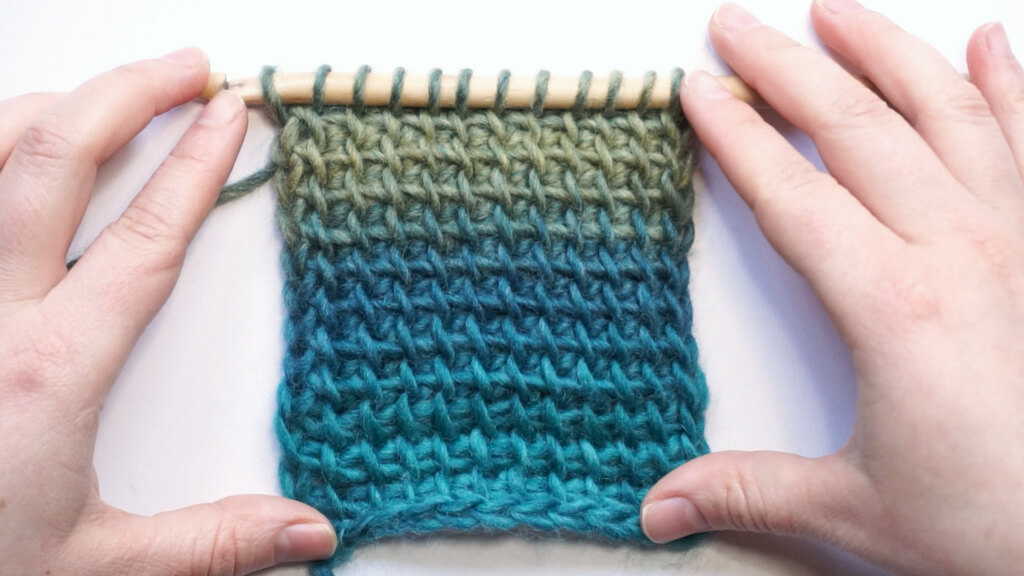
The Tunisian simple stitch is also known as the afghan stitch, as it has been used for decades to create stunning blankets or afghans.
It is called “simple” because it is the easiest and fastest Tunisian crochet stitch to make, and it requires no special manipulation of the hook or the yarn.
How to crochet the Tunisian simple stitch
To make a fabric using the Tunisian simple stitch, you need to start with a foundation row.
If you don’t know how to make a foundation row, follow one of the tutorials on this page.
For this tutorial, we will cast on 11 stitches, not counting the first loop.
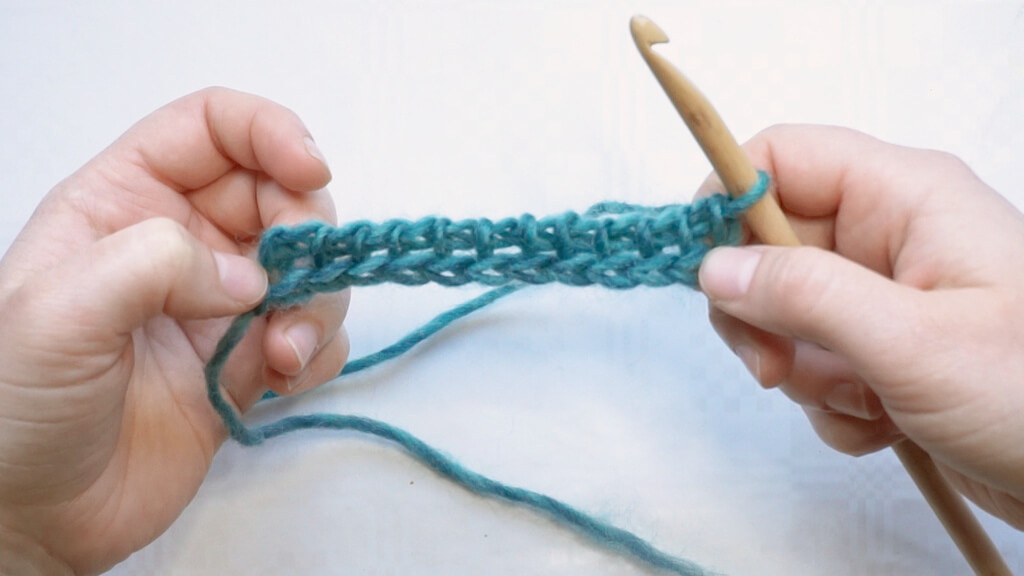
To make the first Tunisian simple stitch, insert the hook behind the first vertical bar in the foundation row (in the stitch right after the first loop on the edge).
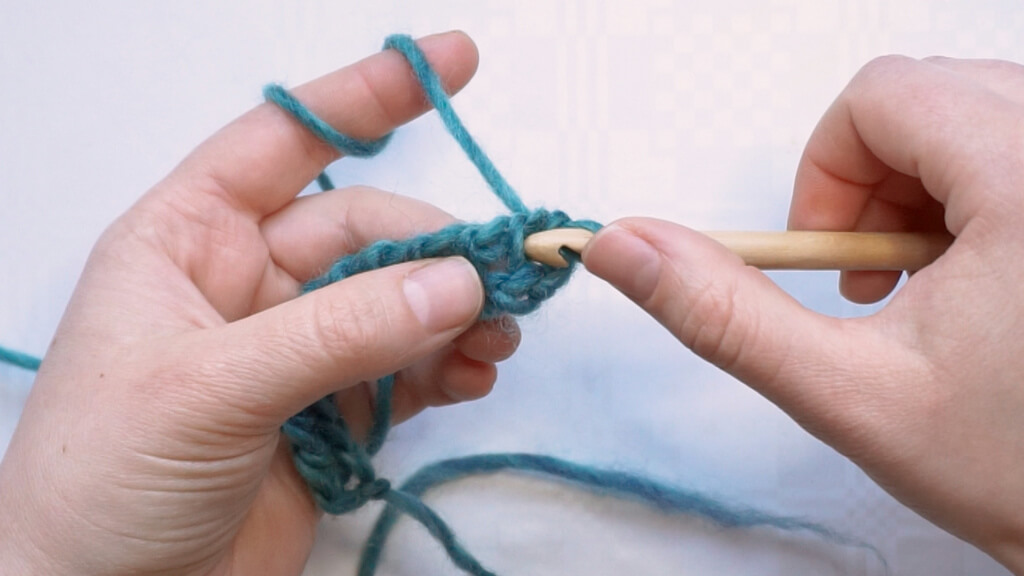
Yarn over and pick a loop on the hook. Keep this loop on the hook.
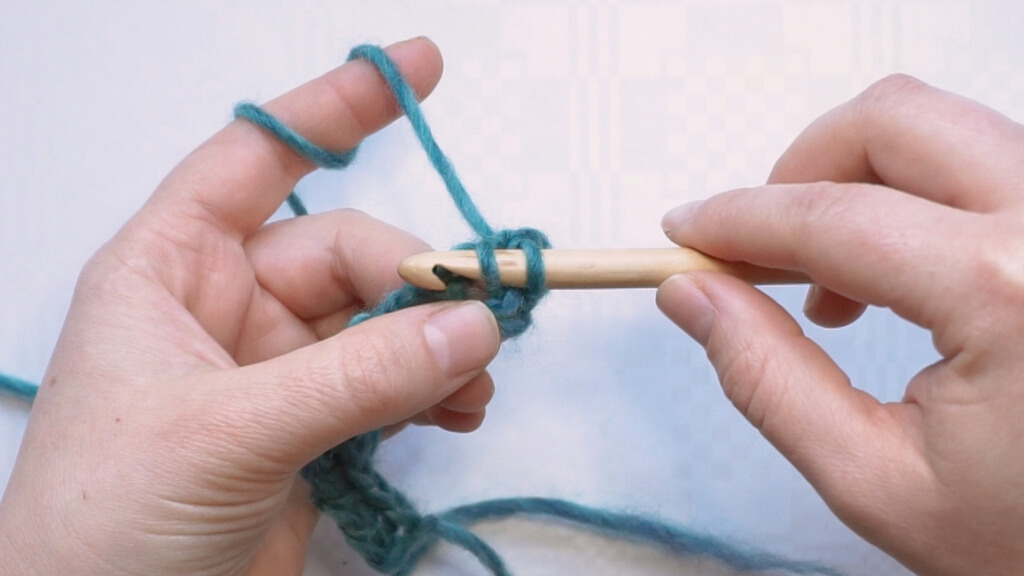
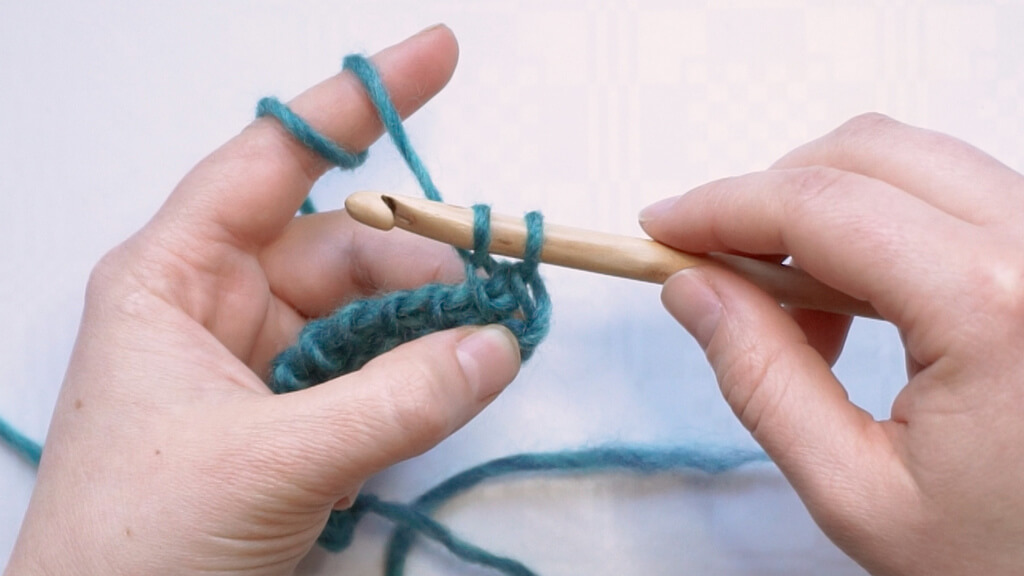
Continue inserting the hook under the next vertical bar and picking up loops.
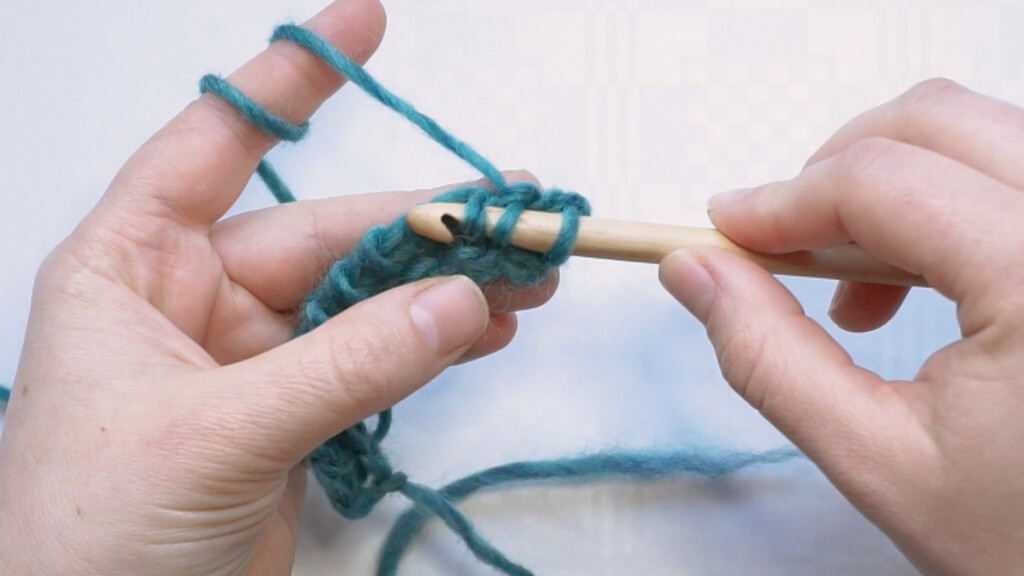
Pick up loops under all the vertical bars in the foundation row.
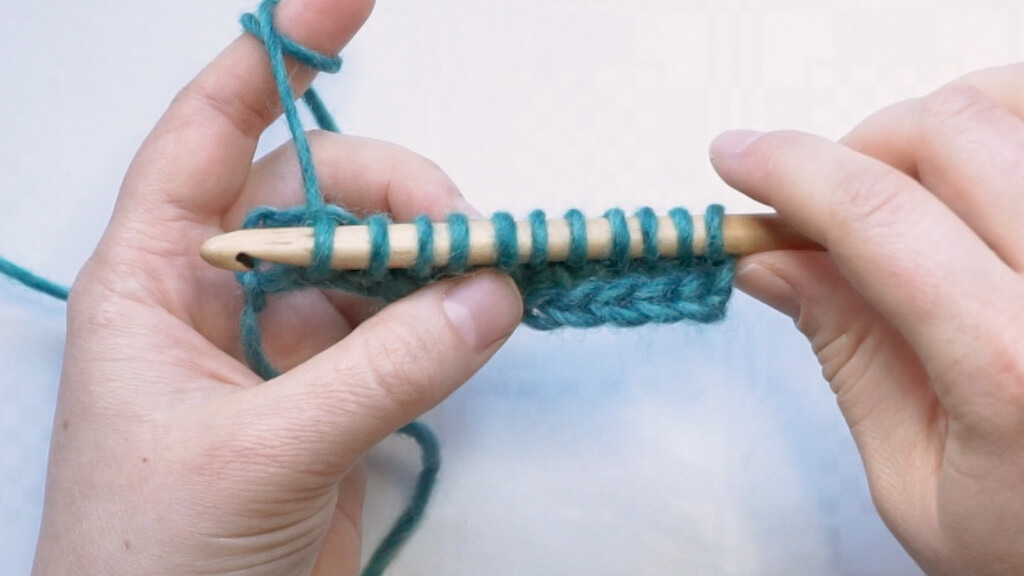
At the end of the row, insert the hook under the two vertical bars on the edge and pick up a loop. This is usually called the last stitch.
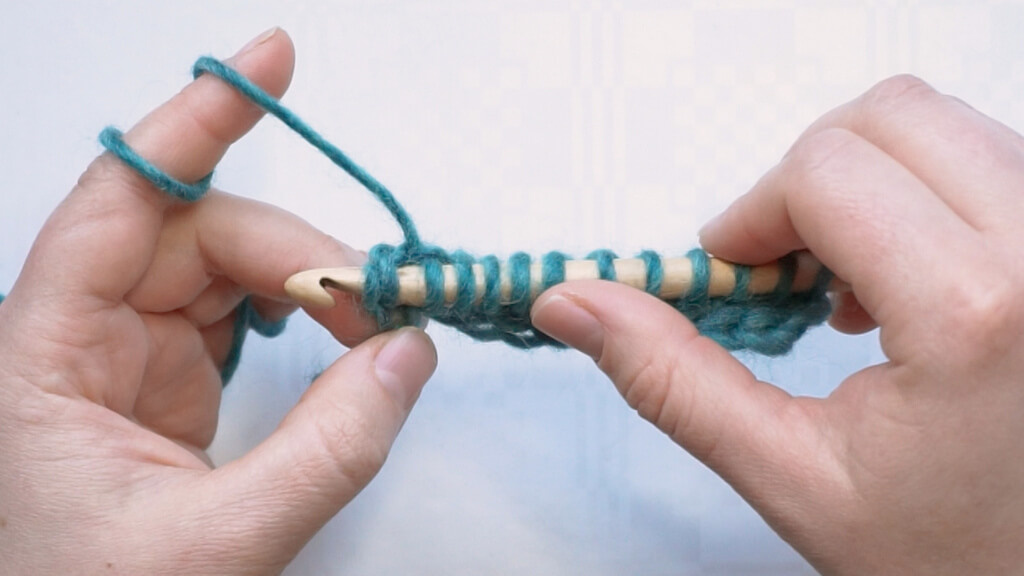
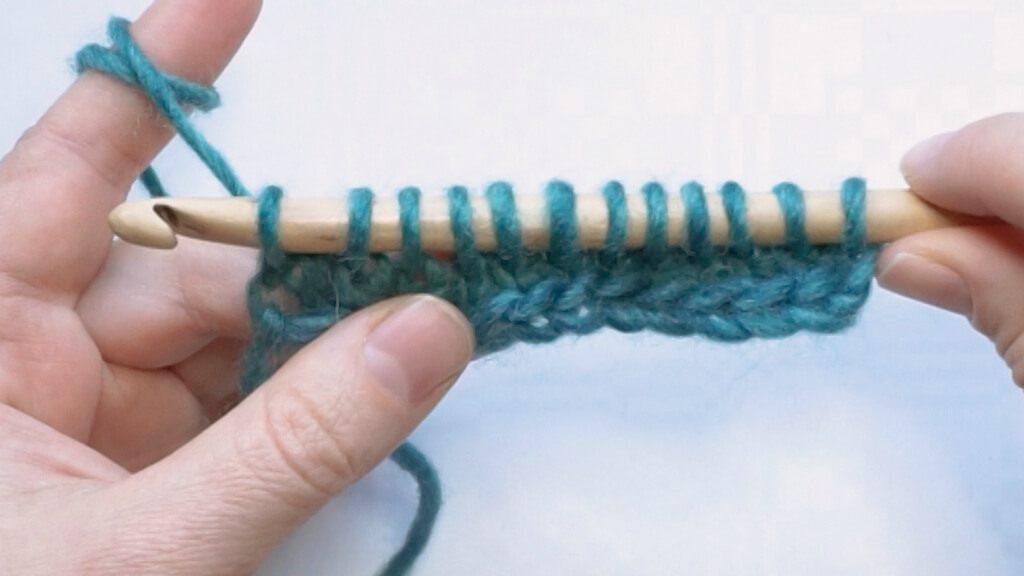
To make the return pass, first chain one. This will create a straight and smooth edge. Some designers skip this step to make a tighter edge at the end of the row.
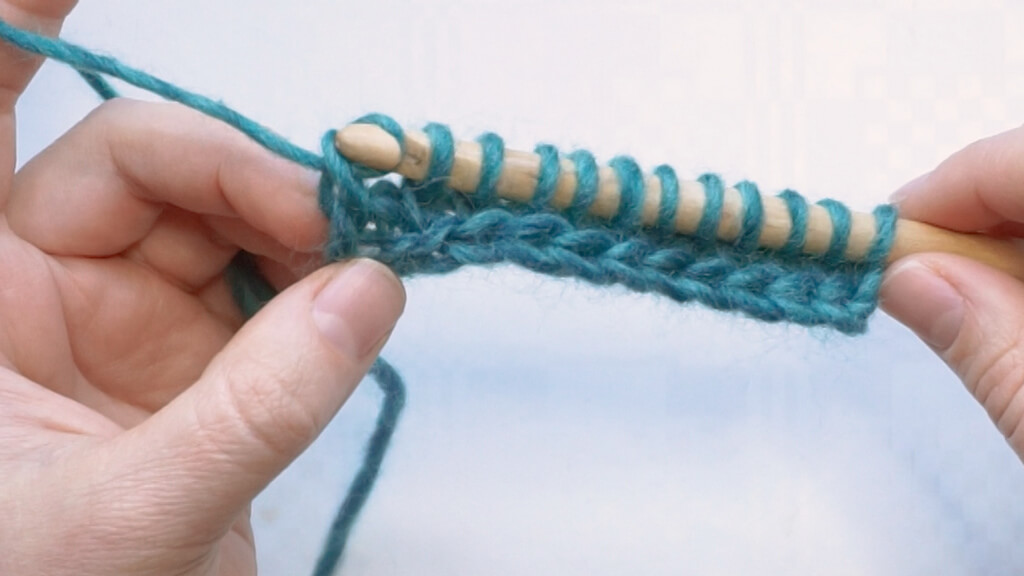
Continue to make the return pass by repeating “yarn over and pull through two loops on the hook”.
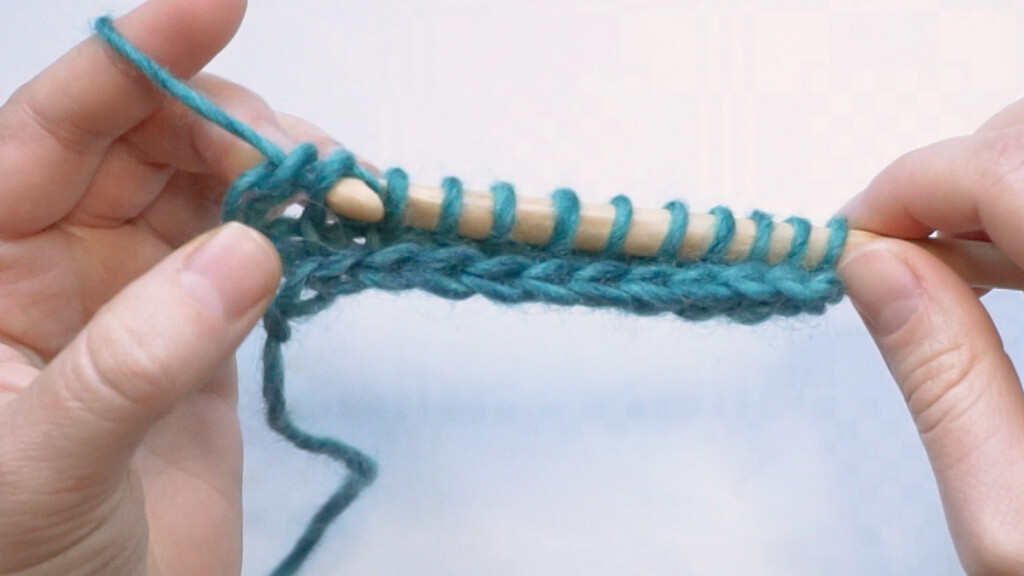
Once the return pass is complete, you should have only 1 loop left on the hook.
Continue picking up stitches behind the vertical bars of the stitches below to make a Tunisian simple stitch fabric.
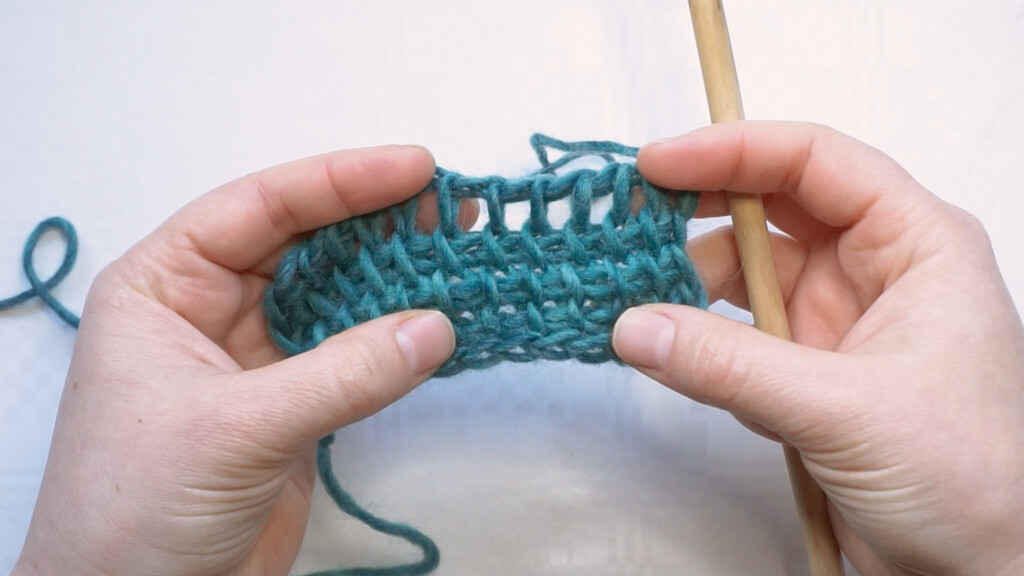
The back of the work will look bumpy, with horizontal loops. This is how it should look.
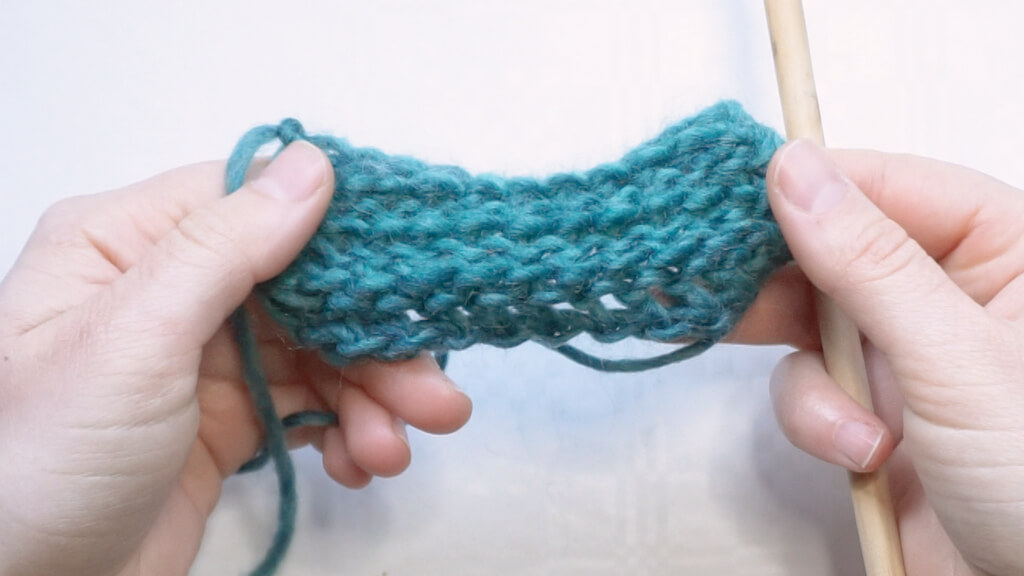
This will also cause the fabric to curl, even if you use very loose tension, like I did in this tutorial.
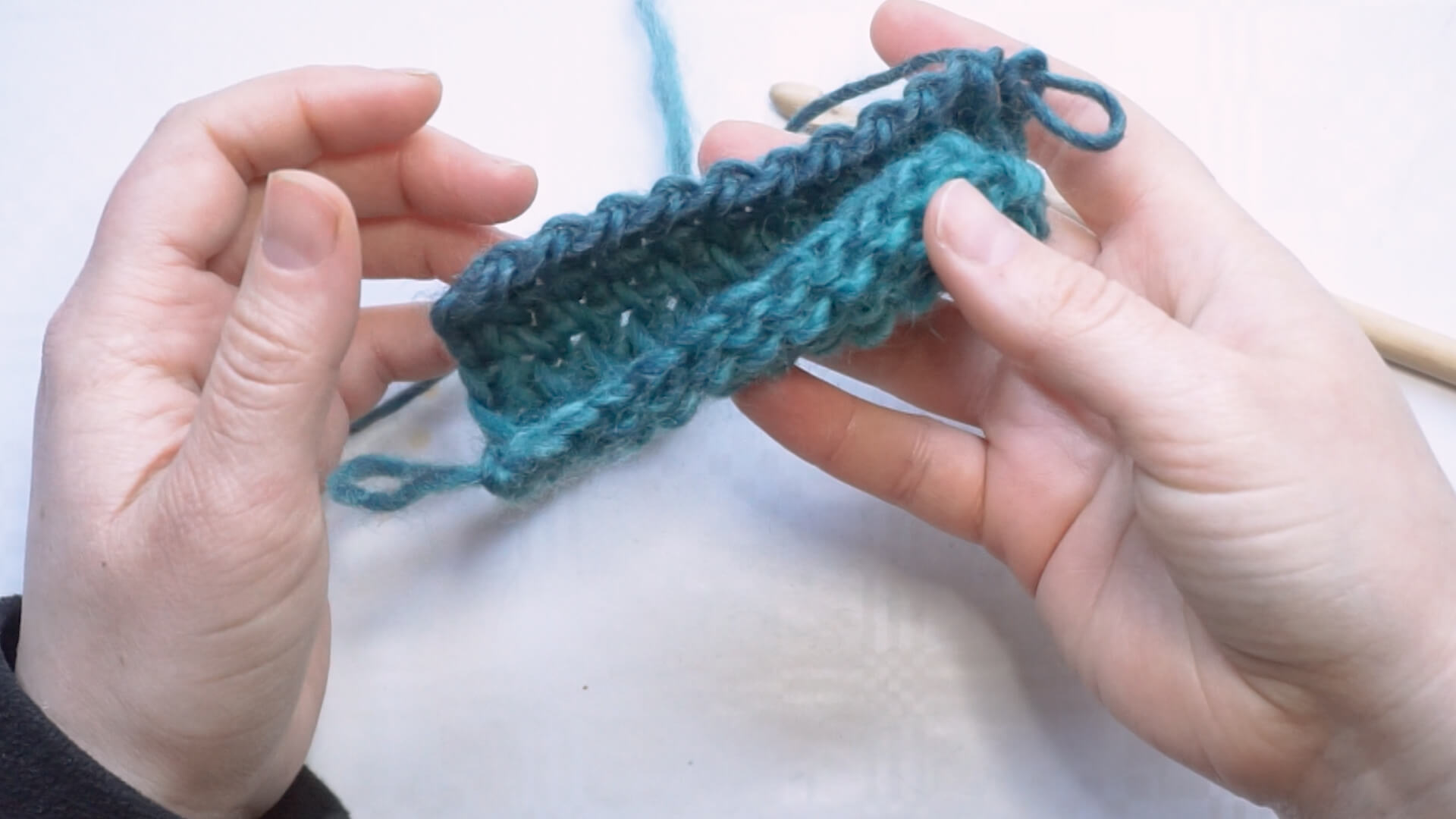
See below how to manage the curling of the Tunisian simple stitch fabric.
To bind off in pattern, insert the hook under the next vertical bar and pull up a loop. Slip stitch and repeat the process until you reach the last stitch.
Pick up the last stitch as usual and slip it. Cut off the yarn and pull the thread through the loop to secure it.
To weave in the end, follow one of the 3 methods for weaving in ends that I detailed in this tutorial.
Video tutorial for the Tunisian simple stitch
Right handed video tutorial for the Tunisian simple stitch.
Left handed Tunisian simple stitch video tutorial.
In these videos I also show how to make some variations of the Tunisian simple stitch.
You can try them out, but it is best to start with the simple stitch and master it before experimenting with different ways of making Tunisian stitches.
Managing curling in Tunisian simple stitch
Most beginners who try Tunisian crochet for the first time end up wondering if they’re doing something wrong. Why is Tunisian simple stitch fabric curling?
The curl is inherent in the Tunisian simple stitch and a few other stitches due to the way that the stitches are made.
More of the fabric is on the back of the work, just like in stockinette in knitting.
That makes the Tunisian simple stitch fabric curl towards the part of the fabric that has less volume (front), to allow the part with more volume to expand (back).
There are different ways of reducing curling in Tunisian simple stitch fabric. Explore them all in the post dedicated to reducing or removing the curl of Tunisian crochet projects.
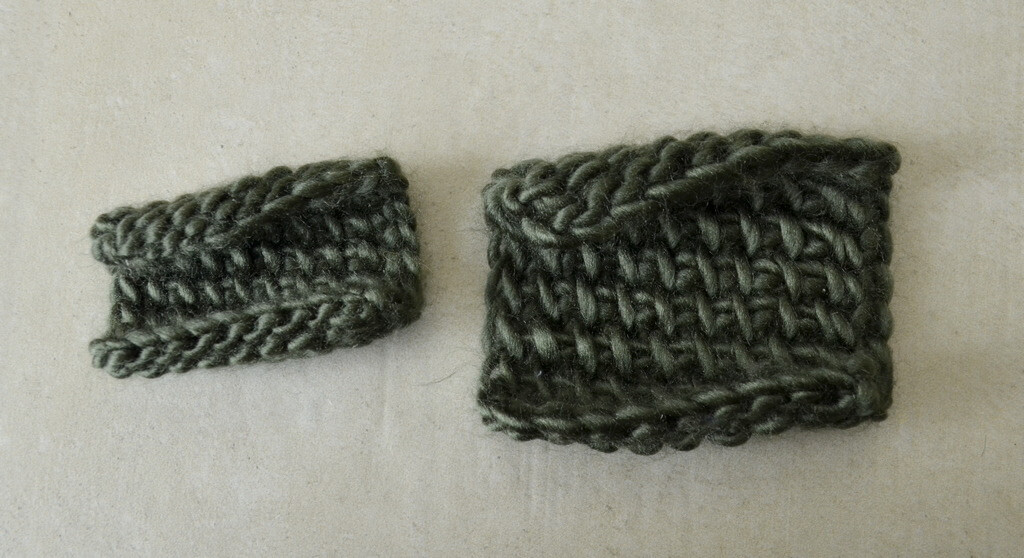
Just going up a hook size is not enough to remove the curl of Tss. It will reduce it a little, but you want good tension, so don’t overdo it. Rather, use one of the methods in the article linked above.
Patterns using the Tunisian simple stitch
The Tunisian simple stitch can be used either on its own, or as part of a stitch pattern. You can make hats, scarves, blankets, articles of clothing, shawls, slippers, pillows.
It’s a very useful an versatile stitch, although sometimes you do need to use it in combination with other stitches to prevent curling.
In the list below, you’ll find a lot of patterns that use the Tunisian simple stitch either on its own or as a main stitch. I don’t even think I have ever created a pattern that doesn’t use Tss. It’s that useful.
Corner to corner Tunisian crochet scarf pattern
Nordic star Tunisian crochet baby blanket pattern
Tunisian crochet cat ear beanie free pattern
Free wavy mosaic Tunisian crochet pattern
Feather and fan Tunisian crochet pattern for a washcloth
Tunisian crochet asymmetrical rounded triangle shawl tutorial
How to make a Tunisian crochet mosaic bee potholder
Free pattern for leaf lace Tunisian crochet bandana
Tunisian crochet houndstooth pattern for fingerless mittens
Tunisian crochet in the round tutorial with free pattern
I hope you enjoyed this exploration into the world of the Tunisian simple stitch and that you will try out all the other stitches.
Visit this page for an overview of Tunisian crochet resources, including links to all the stitch tutorials and other tutorials that will help you start and complete Tunisian crochet projects.

